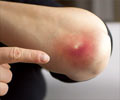Around 8000 antibiotic combinations made up of four or five pills together were very effective in killing harmful bacteria, says study.
- Grouping four or five existing antibiotic medications is surprisingly effective in curbing the rise of harmful bacteria
- Around 8000 groupings of drugs were more effective in stopping the growth of E. coli than what was expected
- Antibiotic combinations might be a solution to effective treatment and maybe even antibiotic resistance
"There is a tradition of using just one drug, maybe two," said Pamela Yeh, one of the study's senior authors and a UCLA assistant professor of ecology and evolutionary biology. "We're offering an alternative that looks very promising. We shouldn't limit ourselves to just single drugs or two-drug combinations in our medical toolbox. We expect several of these combinations, or more, will work much better than existing antibiotics."
The researchers chose eight antibiotics and analyzed how every possible four- and five-drug combination worked against the bacteria Escherichia coli (E. Coli).
The eight tested drugs work in six unique ways – some attack the cell walls while others attack the DNA inside.
There were a total of 18,278 combinations in all in varying doses. Expecting only some of the combinations to be very effective at killing the bacteria, they were startled at the number of potent combinations they discovered.
- A total of 1,676 groupings of drugs among the four-drug combinations they tried were more effective in stopping the growth of E. coli than what they had predicted would be the result
- A total of 6,443 groupings of drugs among the five-drug combinations were more effective than the anticipated numbers
- Some of the combinations were only partly effective owing to the different mechanisms of the individual medications for targeting E. coli
- Finally, 2,331 four-drug combinations and 5,199 five-drug combinations were less effective than the expected numbers
The MAGIC framework
The research team are creating open-access software based on their work to be available to other scientists next year that will enable the latter to analyze the different combinations of antibiotics studied by the UCLA biologists and to input data from their drug combination experiments.The software includes a mathematical formula for analyzing how multiple factors interact. The UCLA scientists call the framework "mathematical analysis for general interactions of components (MAGIC)”.
For example, Savage is using concepts from MAGIC in his ongoing research on how elements like rain, temperature, light and other factors can affect the Amazon rainforests.
Yeh, Savage and a professor from the Santa Fe Institute are using MAGIC to unravel how a person’s ideas can be influenced by their parents, friends, schools, media and other institutions and the interactions of these factors.
Earlier reports by the scientists who have worked on this study had focused on combinations of three antibiotics to overcome bacteria's resistance to antibiotics, even when each of them or two of them together were not effective. Another one had shown an unexpected success in reducing E. coli growth by two combinations of drugs.
Hence, it might be worthwhile to use antibiotic combinations going forward especially when individual antibiotics are losing their potency, and if we are lucky we might well be on the path to curbing antibiotic resistance!
Reference:
- More firepower: 8000 new antibiotic combos on the anvil - (https://expressuk.org/news/firepower-8000-new-antibiotic-combos-anvil)
Source-Medindia















